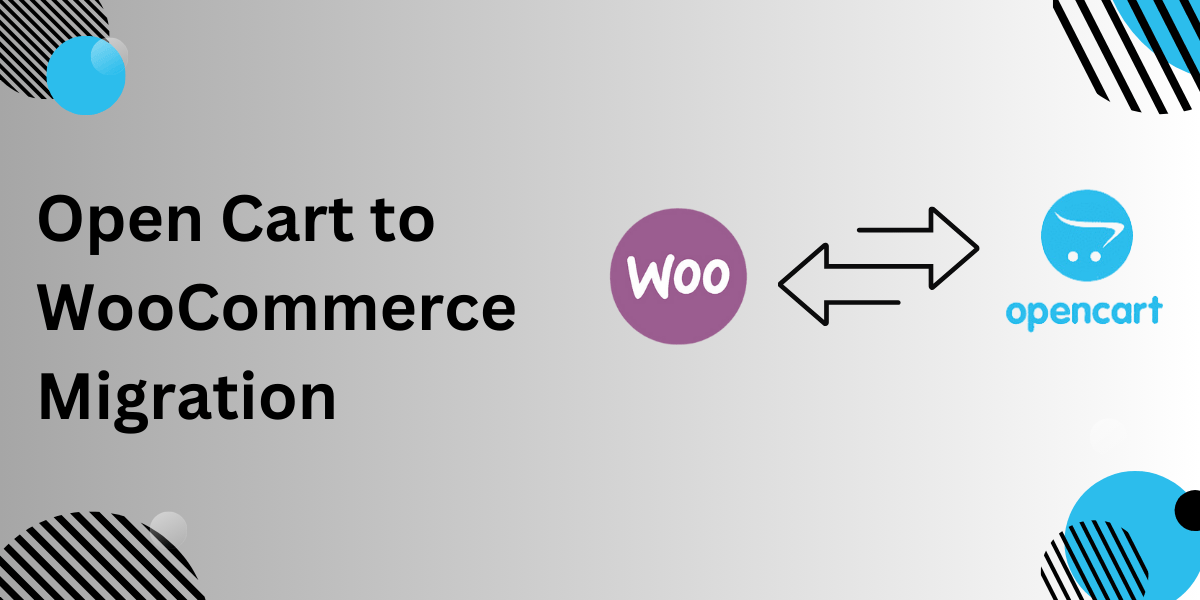Simplifying Your OpenCart to WooCommerce Migration
Moving from OpenCart to WooCommerce may feel like a major project, but it’s a smart choice for businesses looking to enhance their store’s flexibility and performance. Whether you’re after better customization, user-friendly tools, or enhanced SEO, WooCommerce provides a powerful platform for scaling your eCommerce store. Let’s break down the key steps involved in making this migration smooth and worry-free.
Why Consider the Switch from OpenCart to WooCommerce?
WooCommerce has become one of the most widely-used eCommerce platforms, offering an extensive range of themes, integrations, and customization options. If you’re looking for more flexibility, better design options, and control over your store, WooCommerce is the way to go. Not to mention, WooCommerce’s seamless integration with WordPress offers unmatched flexibility for content marketing and SEO.
1. More Flexibility with Plugins
WooCommerce is built on WordPress, making it part of a massive ecosystem with endless plugins. You can extend your store’s functionality without the limitations that often come with OpenCart.
2. Better SEO Performance
WooCommerce, running on WordPress, is built with SEO in mind. You can easily optimize product pages, descriptions, and URLs, helping your store rank higher on search engines.
3. Easy to Use and Customize
While OpenCart has its strengths, WooCommerce offers more user-friendly features, allowing non-technical store owners to customize their store’s design and features effortlessly.
Preparing for the OpenCart to WooCommerce Migration
Before starting the OpenCart to WooCommerce migration, here are the steps you should take to ensure a smooth transition.
1. Backup Your Store Data
Always start by backing up your OpenCart store. This includes your product catalog, customer details, and orders. Having this safety net will save you from unexpected data loss during migration.
2. Set Up WooCommerce
Install WooCommerce on your WordPress site and configure the basic store settings like currency, shipping options, and payment methods.
3. Choose a Migration Method
There are multiple methods for migrating your data from OpenCart to WooCommerce. We’ll dive into them next.
Three Ways to Migrate from OpenCart to WooCommerce
1. Manual Migration
For smaller stores, you can migrate data manually by exporting product, customer, and order data from OpenCart and importing it into WooCommerce. However, this can be tedious and prone to error.
2. Using a Plugin
Plugins like FMEAddons OpenCart to WooCommerce Migration tool automate the migration process. They handle everything, including products, categories, customers, and orders, making it a faster and safer option.
3. Hiring a Migration Expert
For larger or more complex stores, hiring a professional migration service might be the best route. This ensures minimal disruption and offers peace of mind as experts handle the entire process for you.
Important Data to Migrate
When migrating from OpenCart to WooCommerce, ensure the following data is transferred:
- Products: Include product details like titles, descriptions, prices, and images.
- Customers: Migrate customer accounts, addresses, and purchase history.
- Orders: Transfer order details such as statuses, totals, and items ordered.
Always verify that all data has been moved correctly after the migration.
Post-Migration Steps for WooCommerce Success
After the migration, your job doesn’t end. Here’s how you can make the most of WooCommerce:
1. SEO Optimization
Once your store is live on WooCommerce, install SEO plugins like Yoast SEO to optimize product pages and ensure better visibility on search engines.
2. Customize Your Store’s Design
WooCommerce offers a range of free and premium themes, allowing you to customize your store’s look and feel to match your brand.
3. Monitor and Improve Performance
WooCommerce works well with performance optimization plugins like WP Rocket, which improve load times and boost overall store performance.
Potential Challenges and Solutions
Migrating platforms can come with a few bumps along the way. Here’s how to handle them:
1. Data Inconsistencies
If some product details or customer data don’t match perfectly after migration, make sure to double-check the migration plugin’s settings and manually update any discrepancies.
2. Broken URLs
If your URLs change after migration, ensure that you set up proper 301 redirects to retain your search engine rankings.
Conclusion: The Future is WooCommerce
Switching from OpenCart to WooCommerce is a positive step toward a more dynamic, flexible eCommerce platform. With improved SEO capabilities, customization options, and a user-friendly interface, WooCommerce provides everything you need to grow your online store. Taking the time to prepare and follow the correct steps will ensure a seamless transition, setting your business up for future success.






